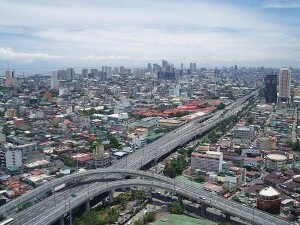The Amazon is an important biome with a territory corresponding to 6.9 million km² and covers nine countries: Brazil, Bolivia, Colombia, Ecuador, Venezuela, Guyana, French Guiana, Peru, Suriname.
The Brazilian part is equivalent to 4,196,943 km², being the largest Brazilian biome.
In addition to its vast territory, another feature that impresses is its biodiversity. In the Amazon there are about 2500 species of trees and 30 thousand species of plants, out of the 100 thousand existing in all of South America.
The Amazon forest is considered the largest tropical forest in the world and its conservation is the subject of international discussions and financing, especially for its importance in climate regulation global.

Main characteristics of the Amazon biome
Climate
The Amazon climate is equatorial, characterized by high temperatures and large rainfall. Annual average temperatures vary between 22 and 28 °C, air humidity can exceed 80% and the rainfall index varies between 1400 and 3500 mm per year.
Relief
The Amazon relief is formed by floodplains (floodplains), Amazonian plateau and crystalline shields. Generally, it does not have altitudes above 200 meters.
However, Pico da Neblina, considered the highest point in Brazil, is located in the north of the state of Amazonas, with an altitude of 3014 meters.
- flood plain: periodically flooded areas;
- Amazon Plateau: maximum height of 200 meters;
- crystalline shields: altitudes above 200 meters.
Hydrography
The Amazon basin is the largest hydrographic basin in the world and its main river, the Amazon, is the largest river in the world by volume of water with more than 7,000 tributaries.
Other rivers that are part of the Amazon hydrography are: Araguaia, Nhamundá, Negro, Solimões, Tocantins, Trombetas, Xingu, Purus, Juruá, Japurá, Madeira, Tapajós, Branco.
Fauna
The Amazon forest is home to numerous species of animals, including: tapir, sloth, marmoset, giant otter, puma, red macaw, toucan, bat, anteater, collared peccary, vinegar dog, margay cat, spider monkey, potbellied monkey, irara, ocelot, jaguarundi, caiman, jaguar, manatee, eels, piranha, pirarucu, anaconda, howler, dolphin pink.
Flora
The vegetation in the Amazon is dense and formed by large trees. Some of the native trees in the Amazon are: andiroba, peach palm, açaí, rubber, mahogany, cedar, kapok and chestnut.
world importance
You may have heard that the Amazon is important for the entire planet, this statement is true and is based on the following facts:
- Participates in the regulation of rains in almost all of Brazil;
- Influence the rainfall regime in South America;
- It represents the greatest biodiversity on the planet, and many species have not yet been discovered.
- Acts in the regulation of the world climate;
- It stores billions of tons of carbon. Deforested forests release large amounts of greenhouse gases into the atmosphere.
Environmental impacts in the Amazon
Many environmental problems cause the imbalance of ecosystems present in the Amazon. The main ones are:
- Fires;
- Mining;
- Agro grazing;
- Logging;
- Smuggling of wild plants;
- Animal trafficking;
- Land dispute;
- human settlements;
- Illegal hunting and fishing;
- Lack of supervision.
Studies indicate that a large part of this biome has already been degraded by human action, that is, the equivalent of almost 20% of its total.
A study published in the journal science, in February 2018, states that the destruction of the Amazon has reached a point of no return. This is because more than 20% of its area has already been deforested, which can have profound impacts on the maintenance of the entire ecosystem.

One of the risks is that the Amazon becomes a large savannah within 50 years.
To curb the threats that put the maintenance of the standing forest at risk, some actions can be taken and many of them have already shown positive results.
- Strict environmental policies;
- Creation of Conservation Units;
- Land regularization.
Read more about the Deforestation in the Amazon.
The Legal Amazon
THE Legal Amazon, created in 1953 corresponds to an area that covers nine Brazilian states: Acre, Amapá, Pará, Amazonas, Rondônia, Roraima and part of the states of Mato Grosso, Tocantins and Maranhão.
With an area of 5,215,423 km², the Legal Amazon corresponds to 60% of the Brazilian territory, and its main objective is the development of the region's economic and social region.
Learn more, read also:
- Brazilian Biomes
- Brazilian ecosystems
- All about the Amazon
Curiosity
The Amazon was recognized as a UNESCO World Heritage Site.
Learn more about the Amazon and other Brazilian biomes:
Test your knowledge withExercises on Brazilian Biomes.



